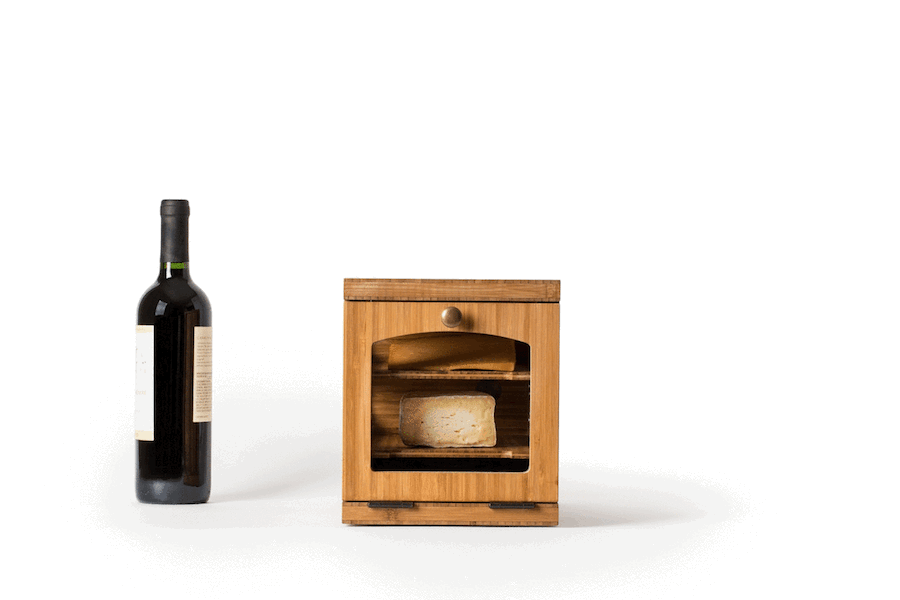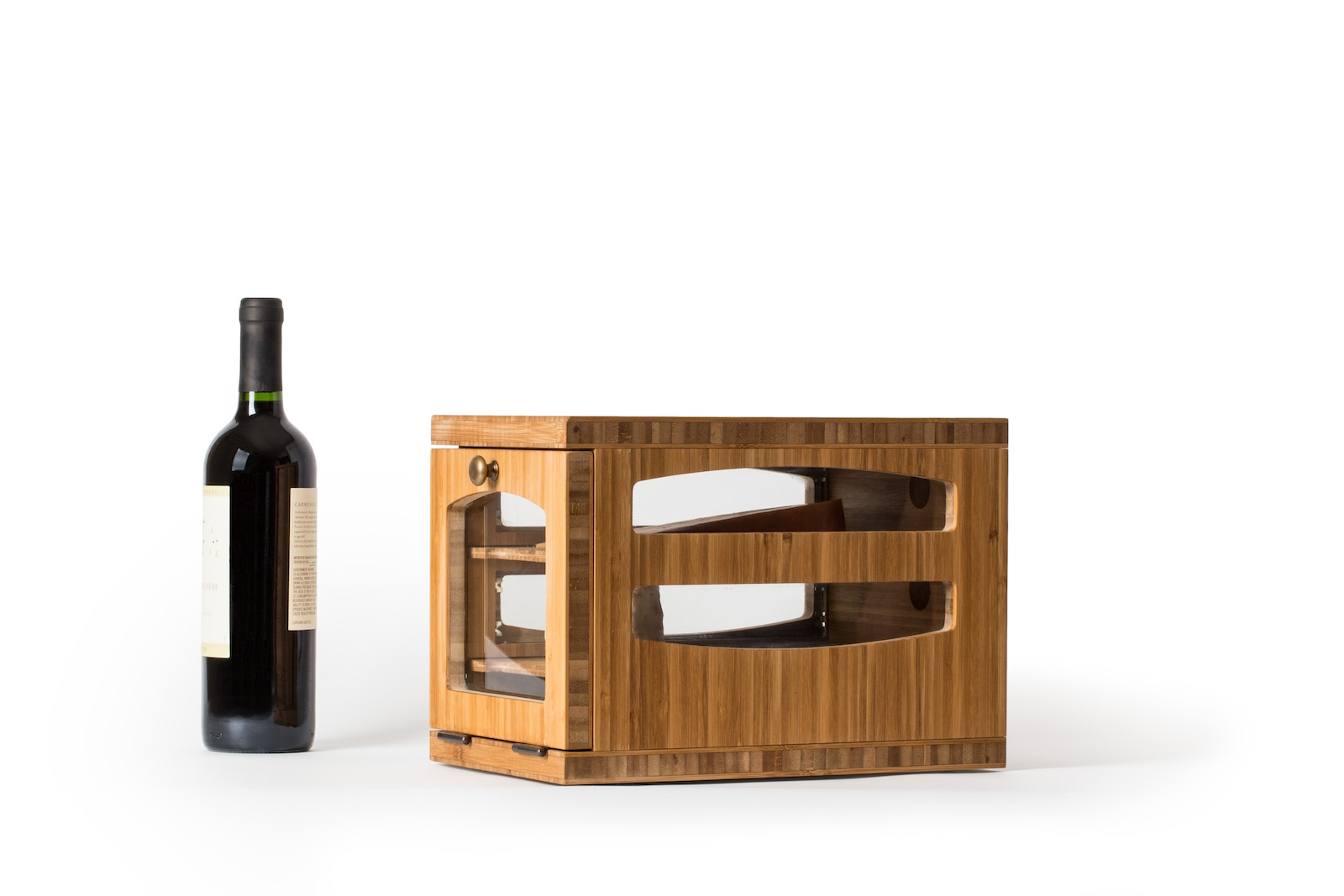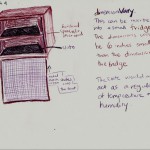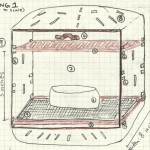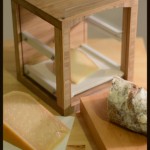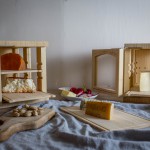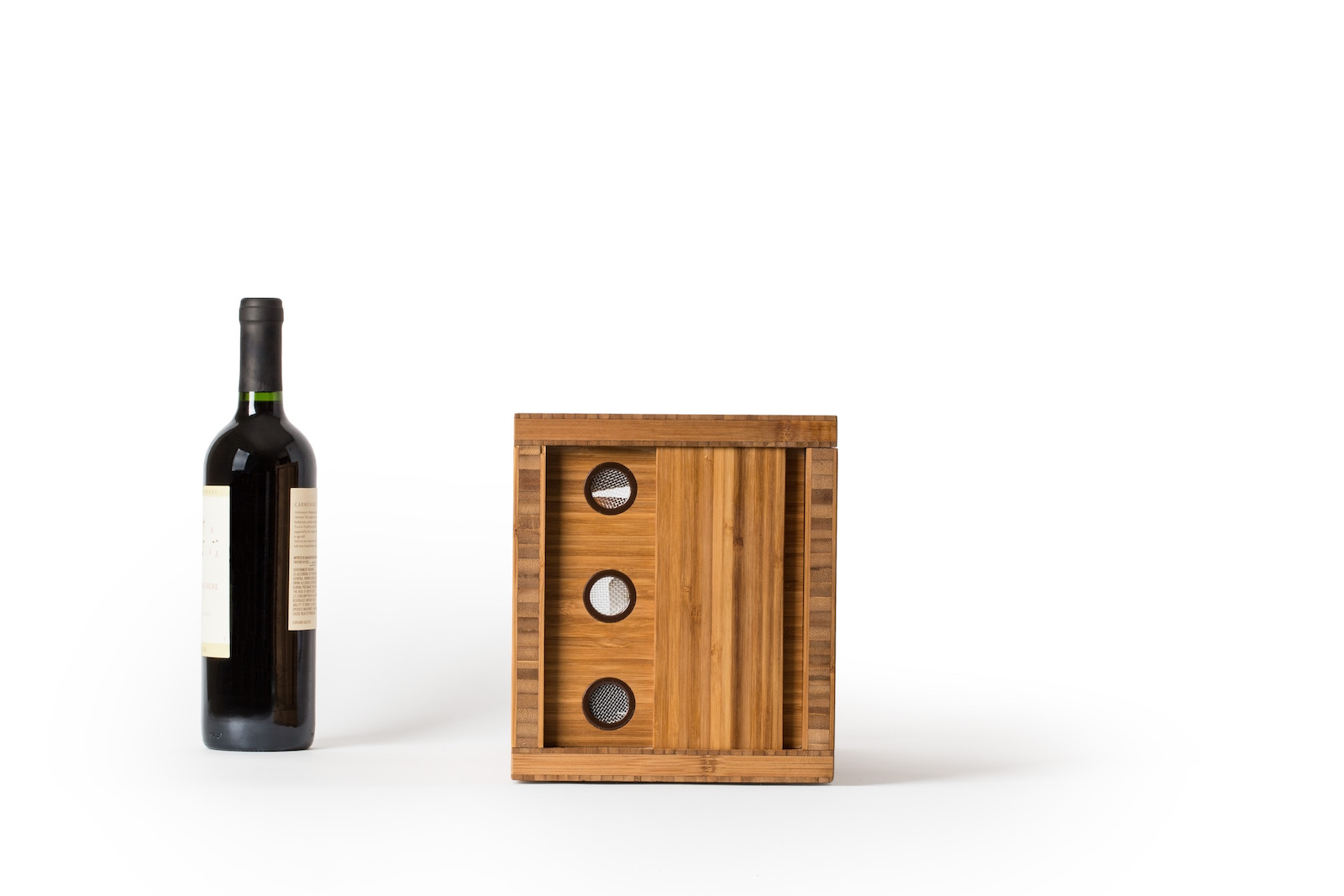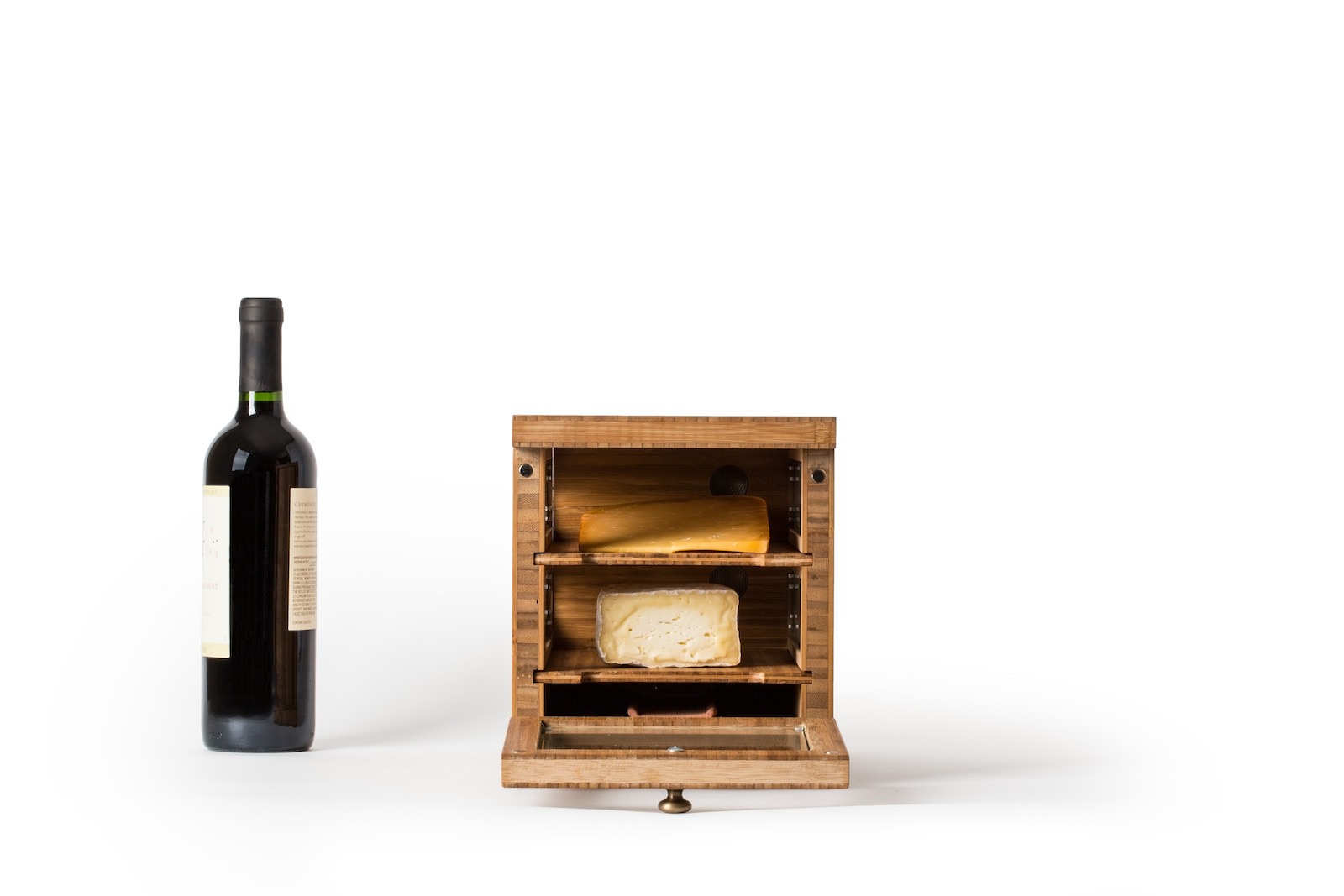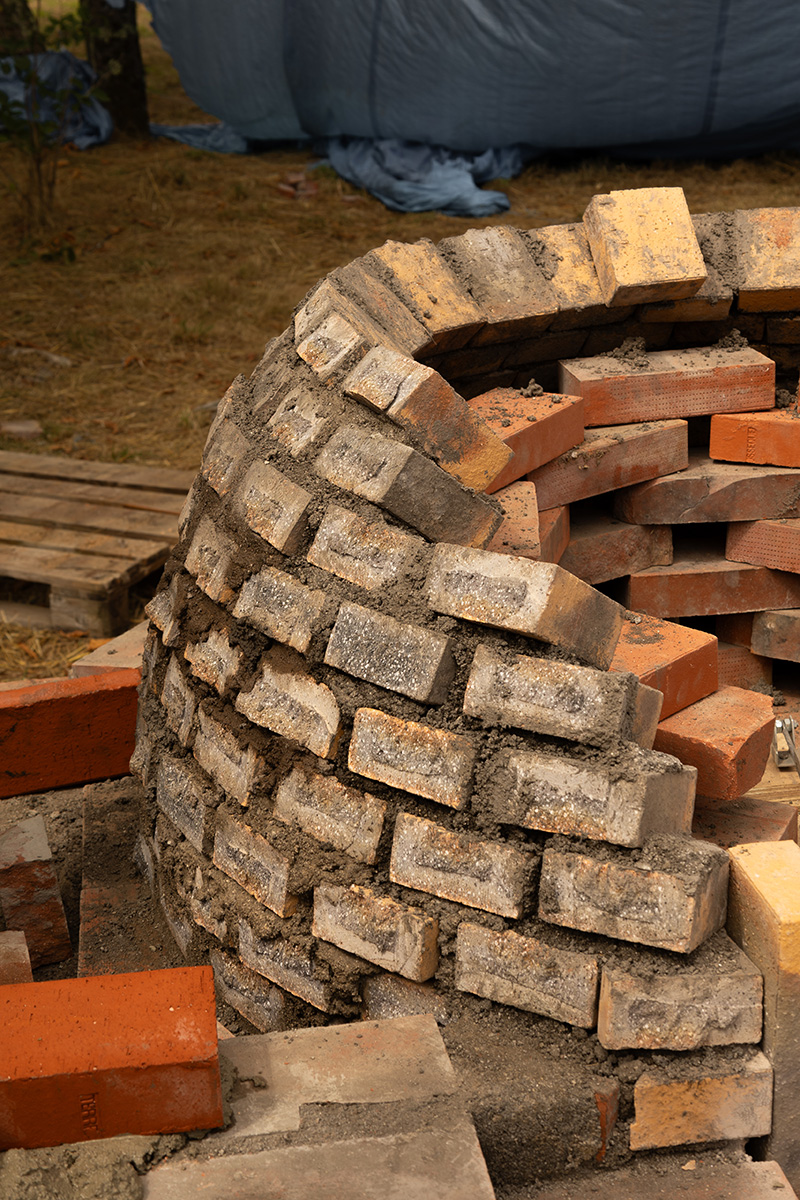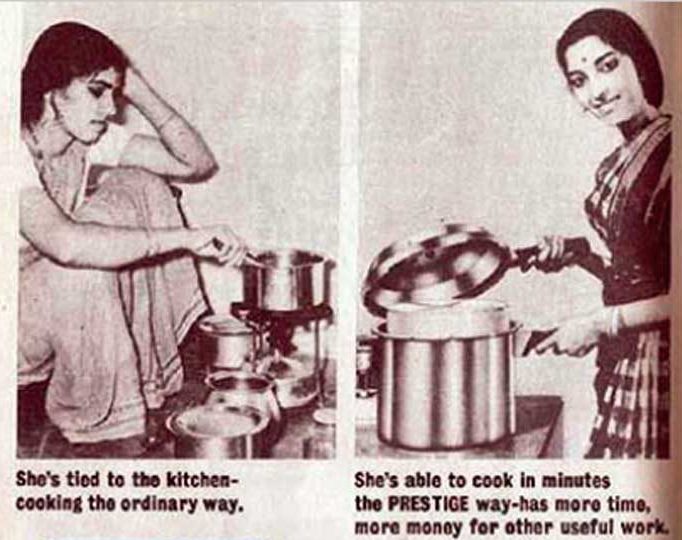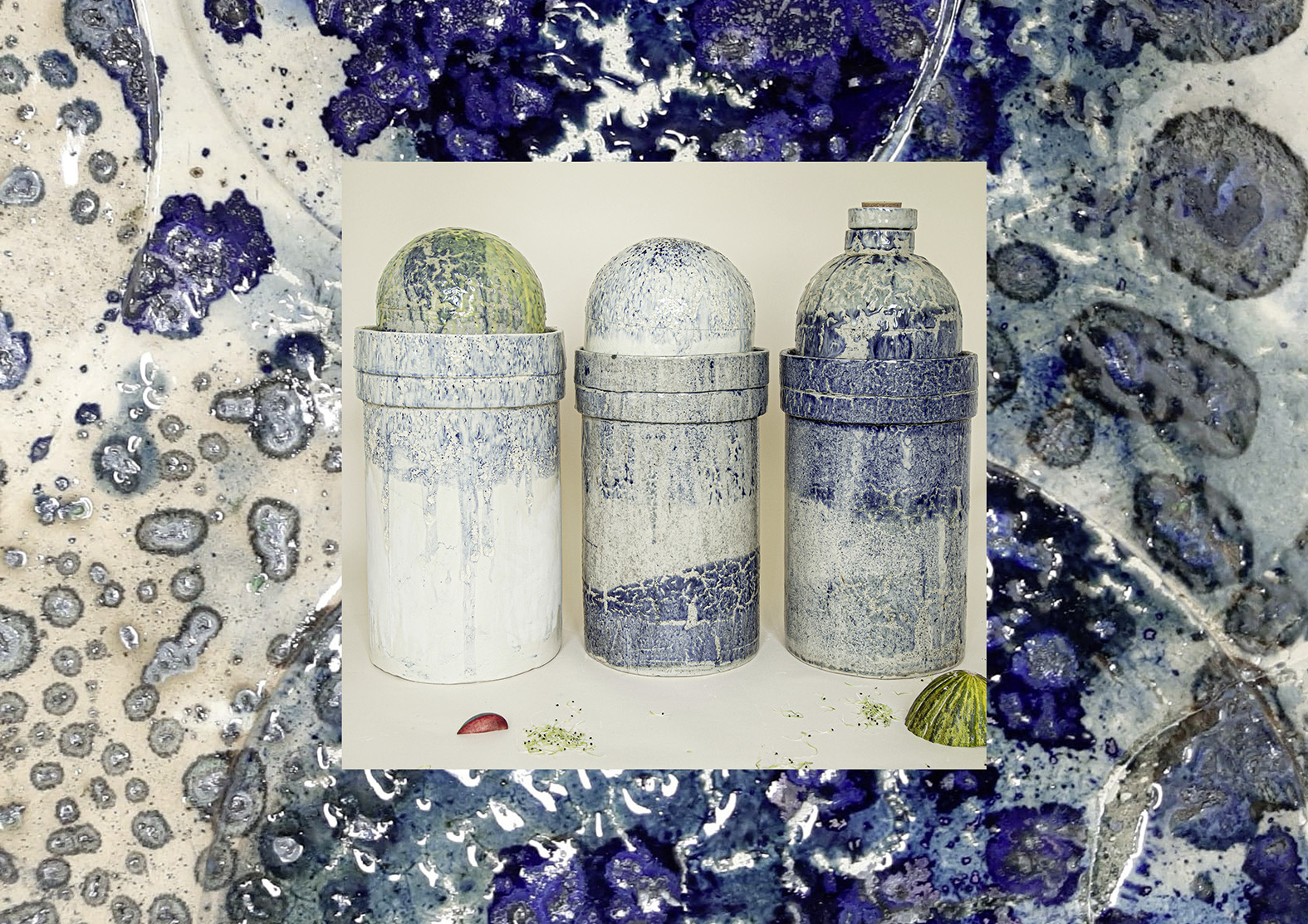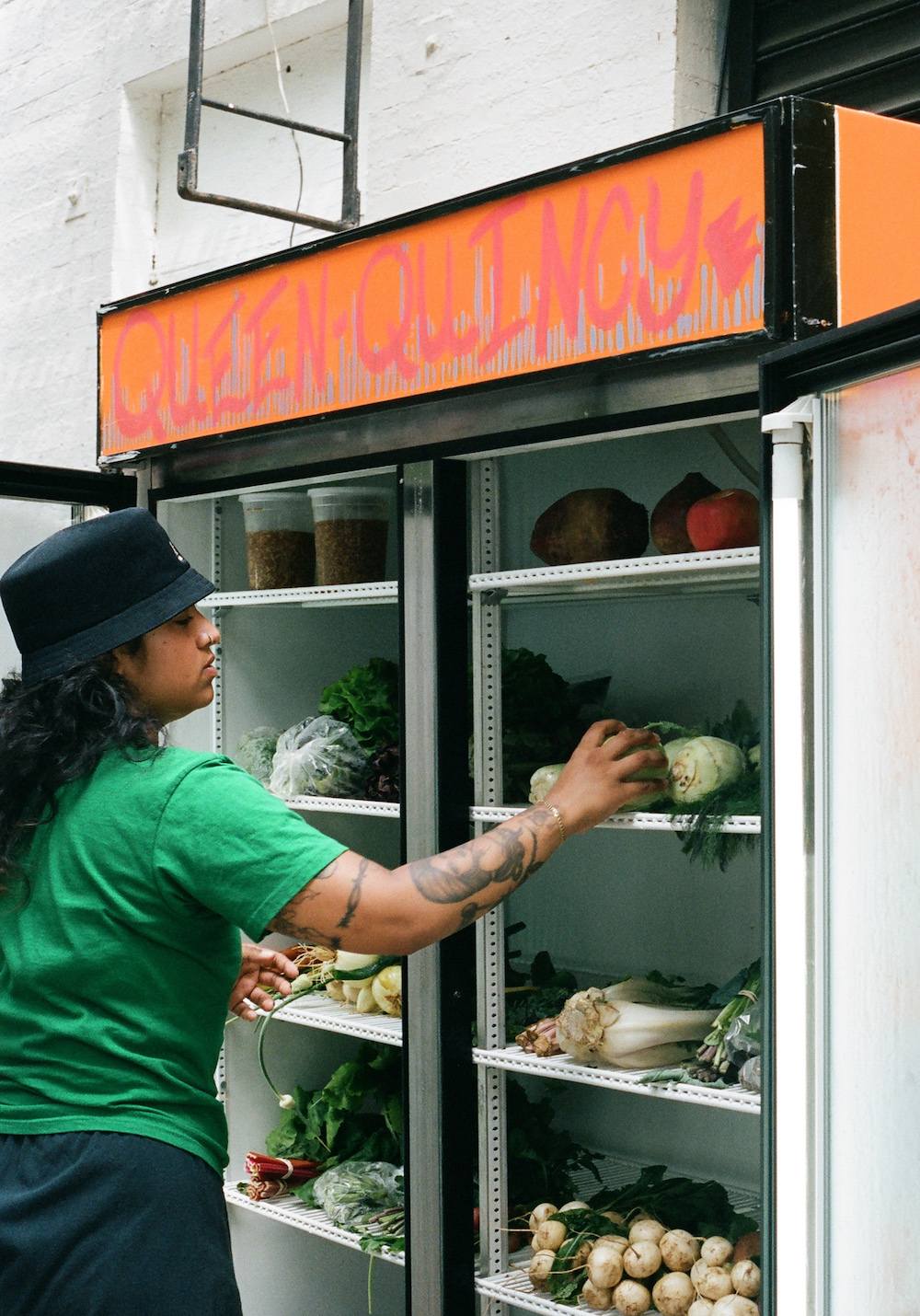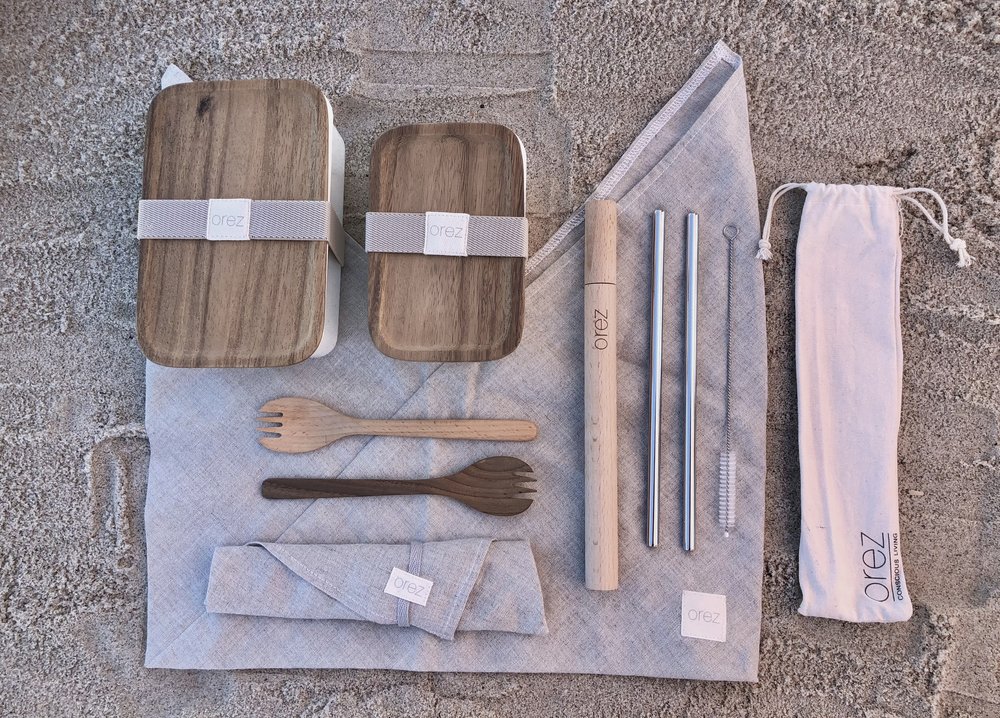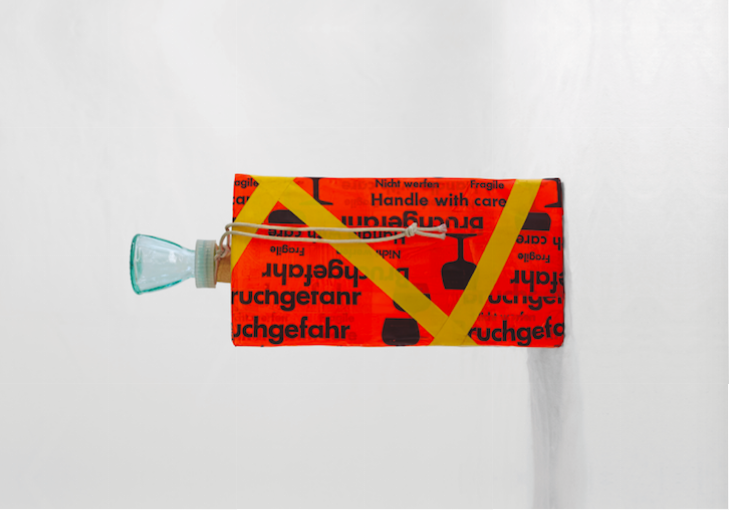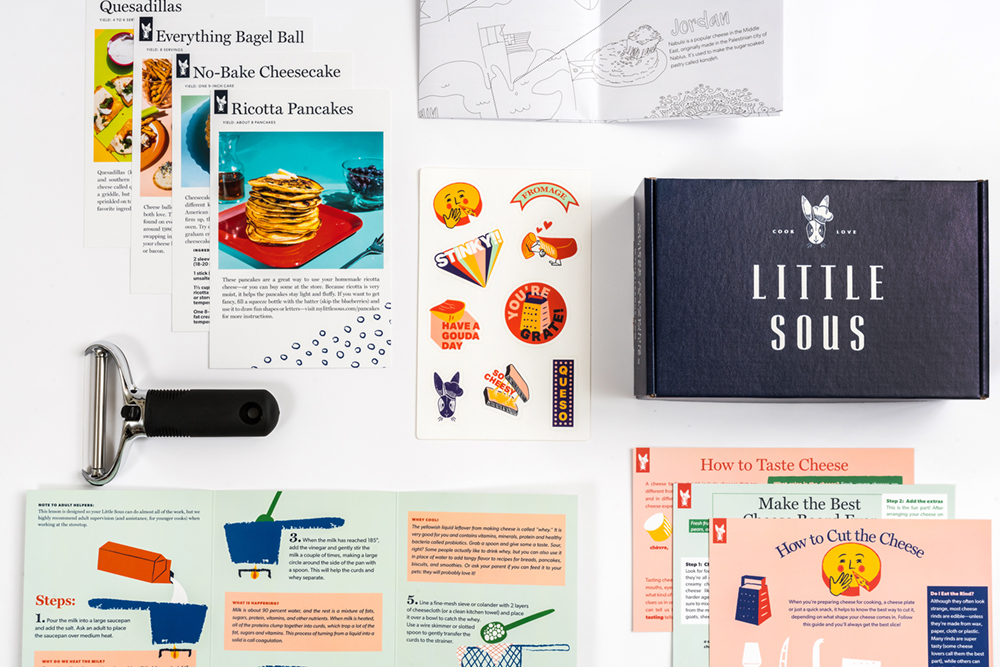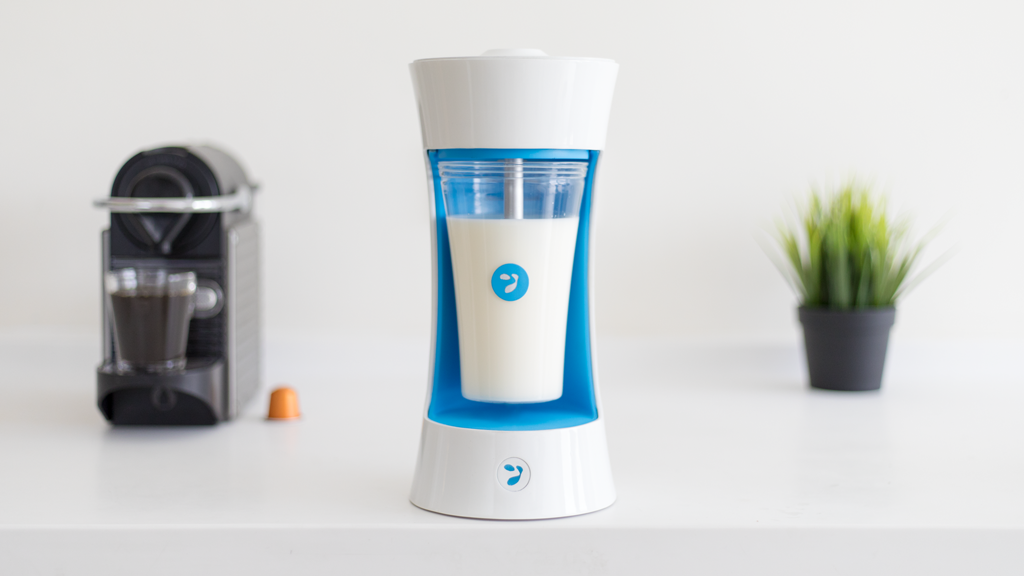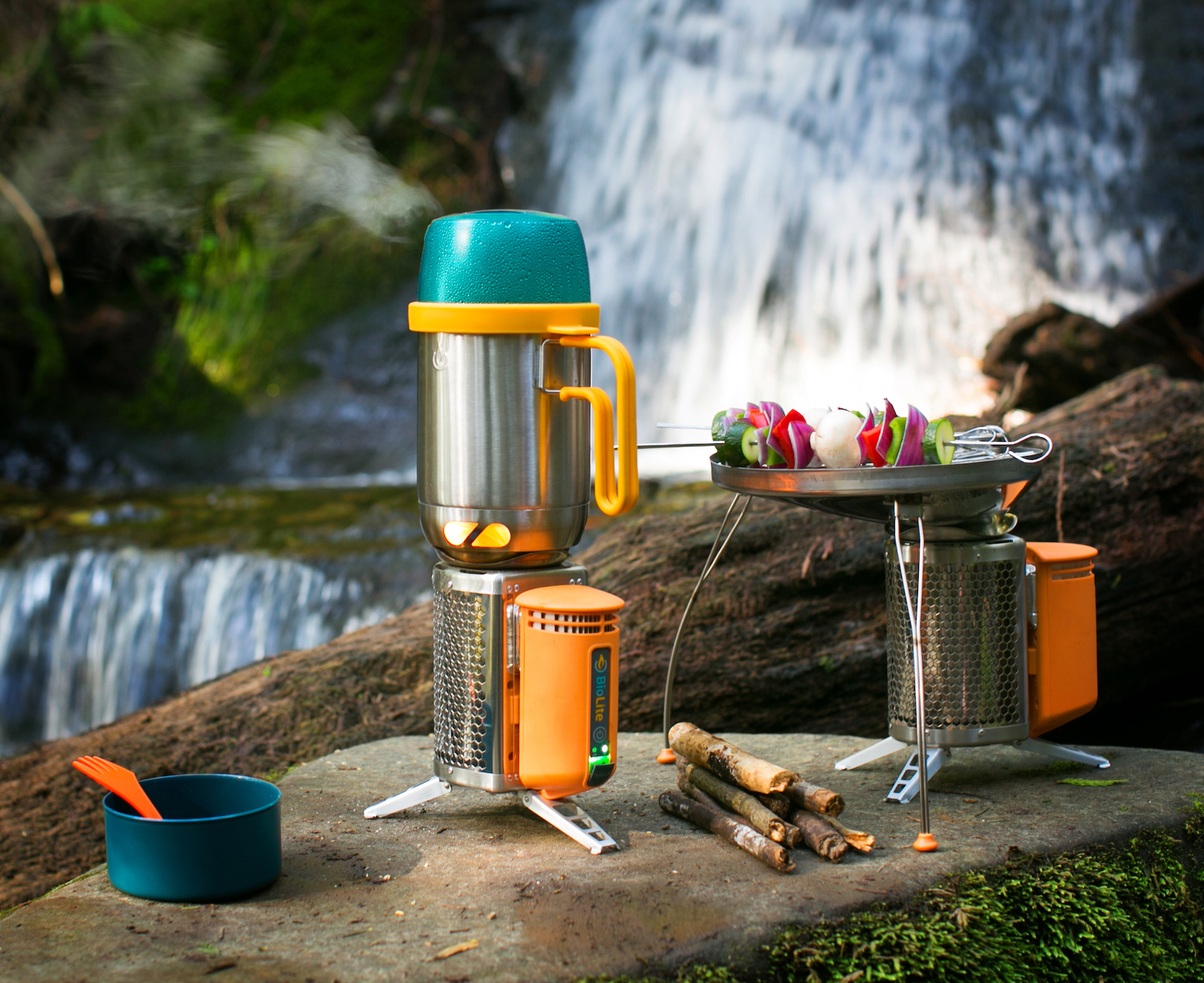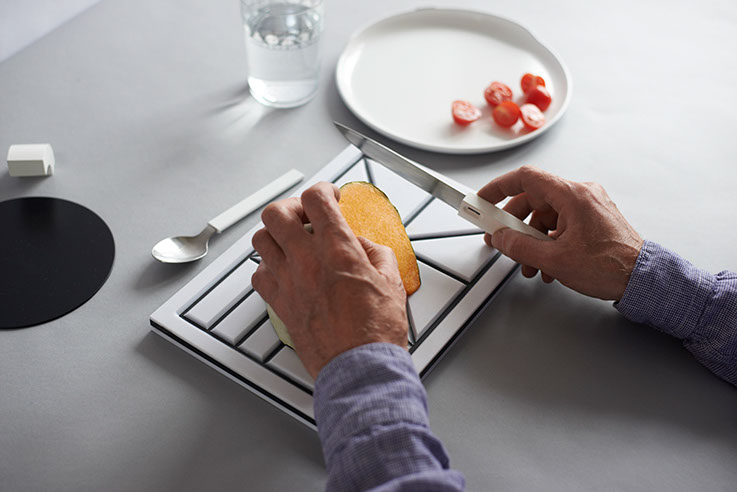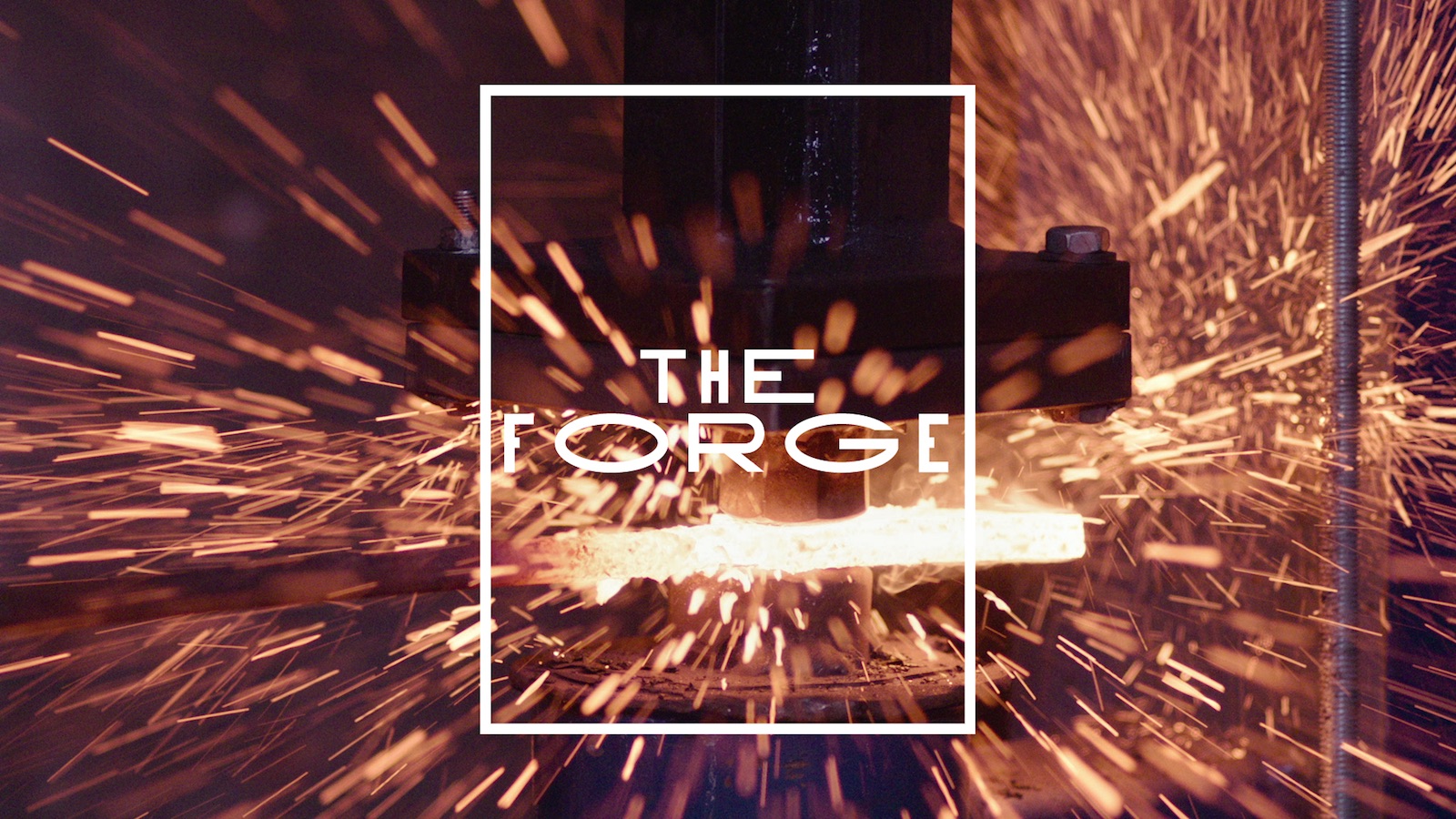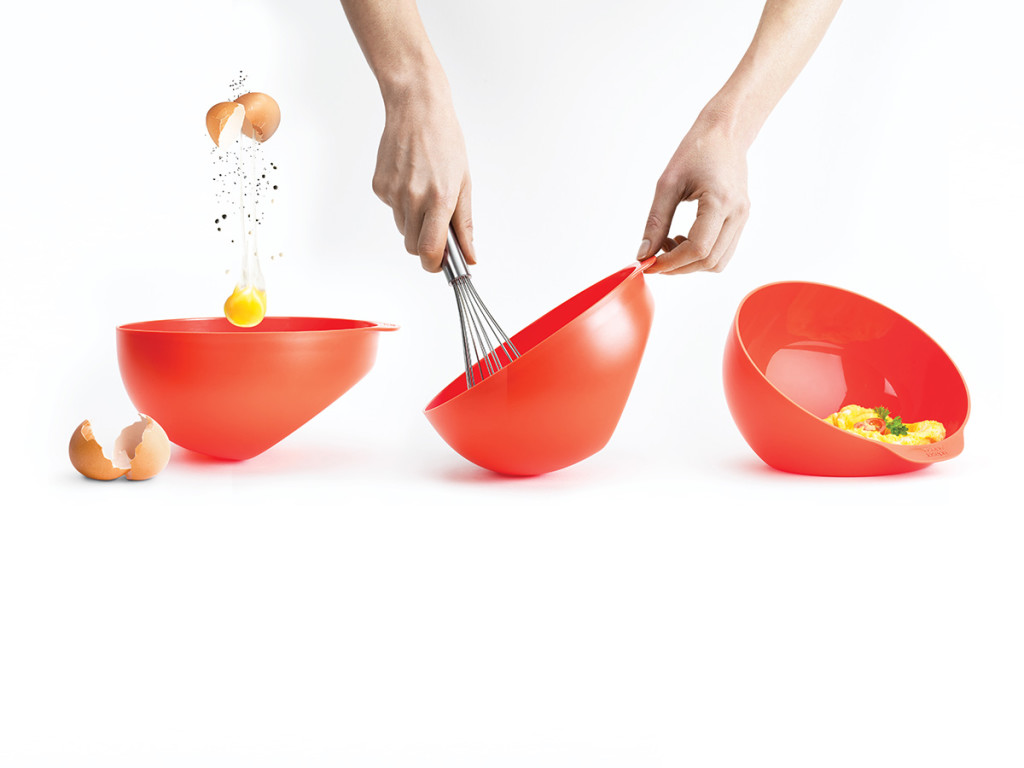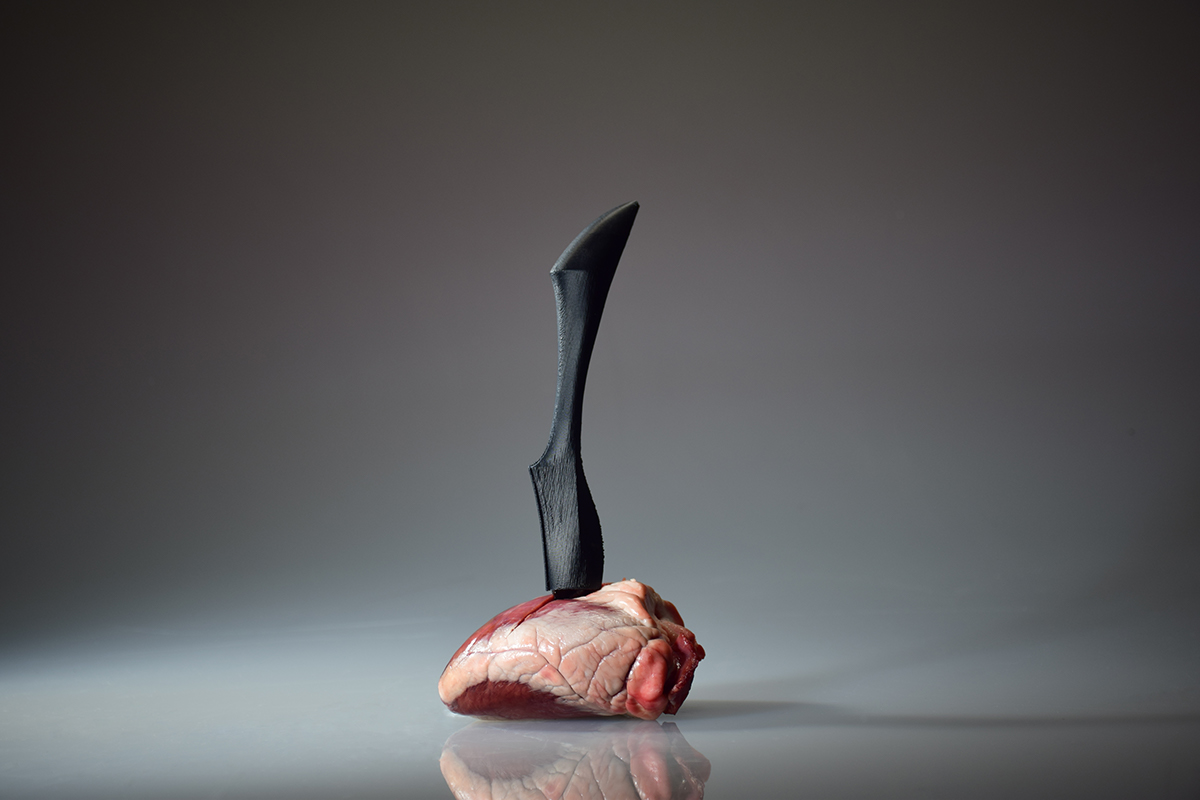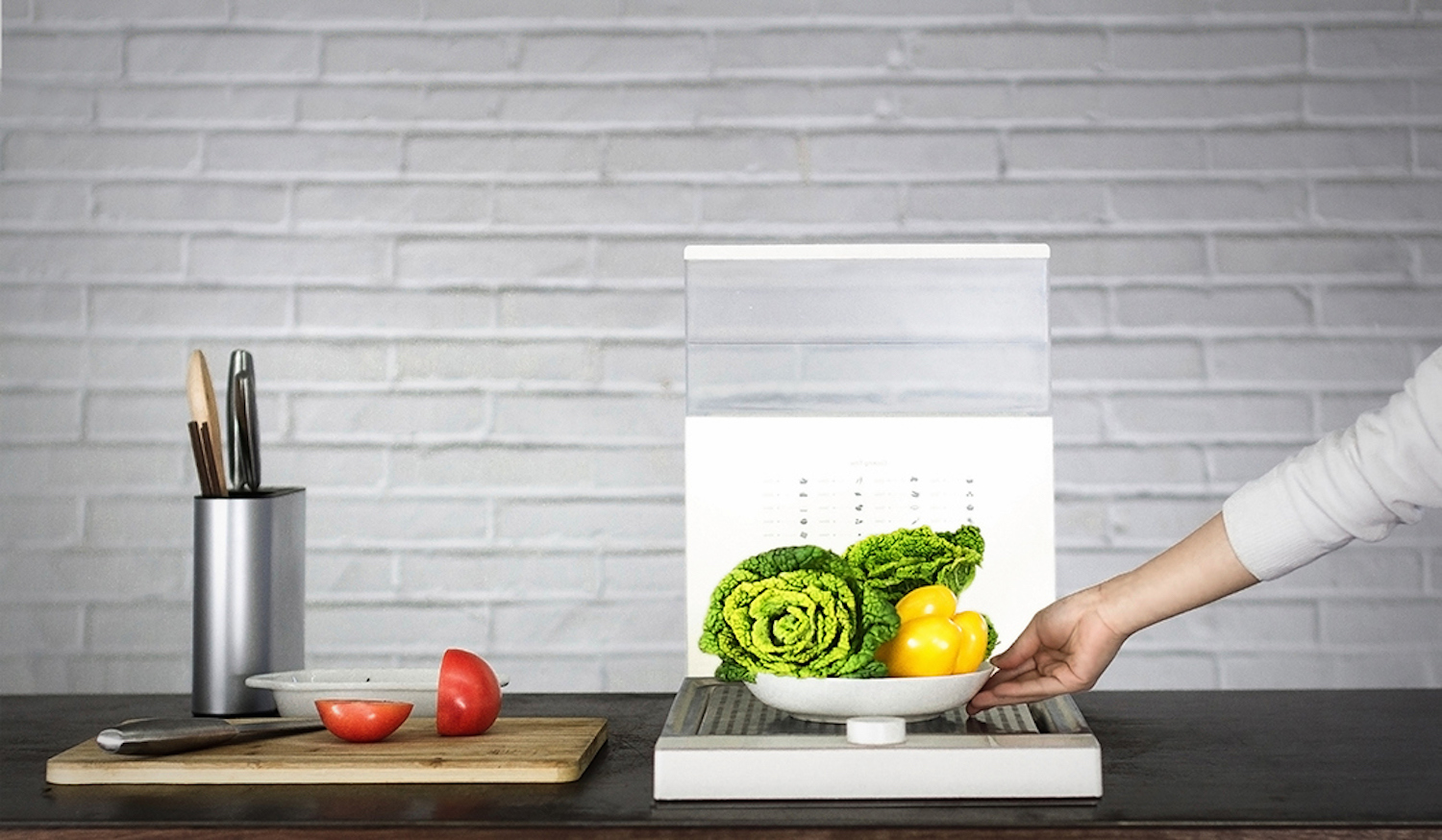It’s not your fault that you’ve been storing your cheese incorrectly this whole time. Plastic wrap? Too suffocating. Tupperware? Too much condensation. Fridge? Too dry. It’s okay. The Cheese Grotto is here to help. The brainchild of cheese monger and educator Jessica Sennett, the Cheese Grotto is a countertop cheese humidor for storing and ripening specialty cheese.
Taking the properties of natural cheese caves, Sennett created the Cheese Grotto to store and preserve the natural flavors and textures of cheese. Her experience selling, handling and making cheese at specialty shops like Cowgirl Creamery and Bedford Cheese Shop gave her insight into the fact that most of her customers weren’t storing their cheese in ideal conditions. “They were sometimes spending $30-40 per pound on these specialty styles and it would end up getting exceptionally moldy too quickly or dry out,” Sennett explained. The travesty of cheese gone wrong became an opportunity. “What it implied to me is that even the strongest advocates of specialty cheese in the consumer market are not completely in line with what the product is and what conditions it needs.”
Those conditions include humidity, airflow and temperature control—optimal conditions found in caves used by cheesemakers but inaccessible to the average cheese aficionado. Developed over the course of two years and numerous prototypes, the Cheese Grotto is a ventilated, bamboo plywood box with removable shelving and a clay brick that can be used to control humidity. Taking inspiration from the natural caves, the ceiling of the Grotto is vaulted to direct any condensation to the sides of the unit, preventing condensation from dripping on the cheese itself.
The material choices create a humidor effect, allowing breathability for the cheese body. Plyboo, an eco-friendly material found in kitchenwares such as cutting boards and cooking spoons, has a certain porosity and provides an ideal microclimate for the cheeses housed within. Plyboo shelving also mimics the wooden boards used by over 75% of cheese makers for the aging process. Despite recent attempts by the FDA to crack down on the use of these wooden boards, Sennett points out that the porosity of wood and plywood, “helps cultivate the right ambiance for the cheese and really creates consistency. Some argue that it actually makes it more safe than if you had a surface that didn’t allow it to cultivate its natural microbial qualities.” Designed with Virginia-based ceramicist Lee Hazelgrove, the clay brick, submerged in water for a few minutes and then placed inside the Grotto, can bring increase the humidity to an ideal 70-75% for storing wedges. Want to ripen your cheese? Soak the brick a few times a day and the Grotto can get to a moist 80-90% humidity. Add a soft cheese and the high moisture content of the cheese body itself contributes to the overall humidity inside the Grotto.
Besides creating an optimal environment to maintain the flavor and texture of cheese for the duration of its shelf life, the Cheese Grotto can also help extend that shelf life. Internal testing with a robiola cheese, a combination cow and goat milk cheese from Italy with a high moisture content, proved dramatic. As Sennett told MOLD, “Everything was in the fridge for added temperature control. We found that the Cheese Grotto from that one test was 4x as effective than the plastic wrap, and we found that it was 3x longer than Tupperware—you get condensation buildup so the cheese is unable to breathe and that stunts the shelf life. The cheese paper is a better alternative than plastic wrap and Tupperware, but because you have to still wrap the cheese, you oftentimes have the cheese stick to the cheese paper so you don’t get the same kind of shelf life or quality as you would with the Grotto.”
Additional testing came through the renowned cheese master Max McCalman of Artisanal in New York City. Concerned about possible cross-contamination between different styles of cheeses, they took two aggressive styles of blue cheese and placed them on different shelves of the Grotto, monitoring the cheeses for two months. In the end, the two cheeses maintained their own ambiance. The reasoning? “We believe that once a cheese has reached a certain stage in their ripening process, you won’t have that type of jumping of molds and bacteria,” Sennett clarified.
The final product is a perfect companion for any serious cheese lover. Measuring 8.5 inches tall with a 12″ by 7″ footprint, the Cheese Grotto is Made in the USA with Eco Supply Center in Virginia. Order yours today and you’ll get it in time for holiday hosting duties.
